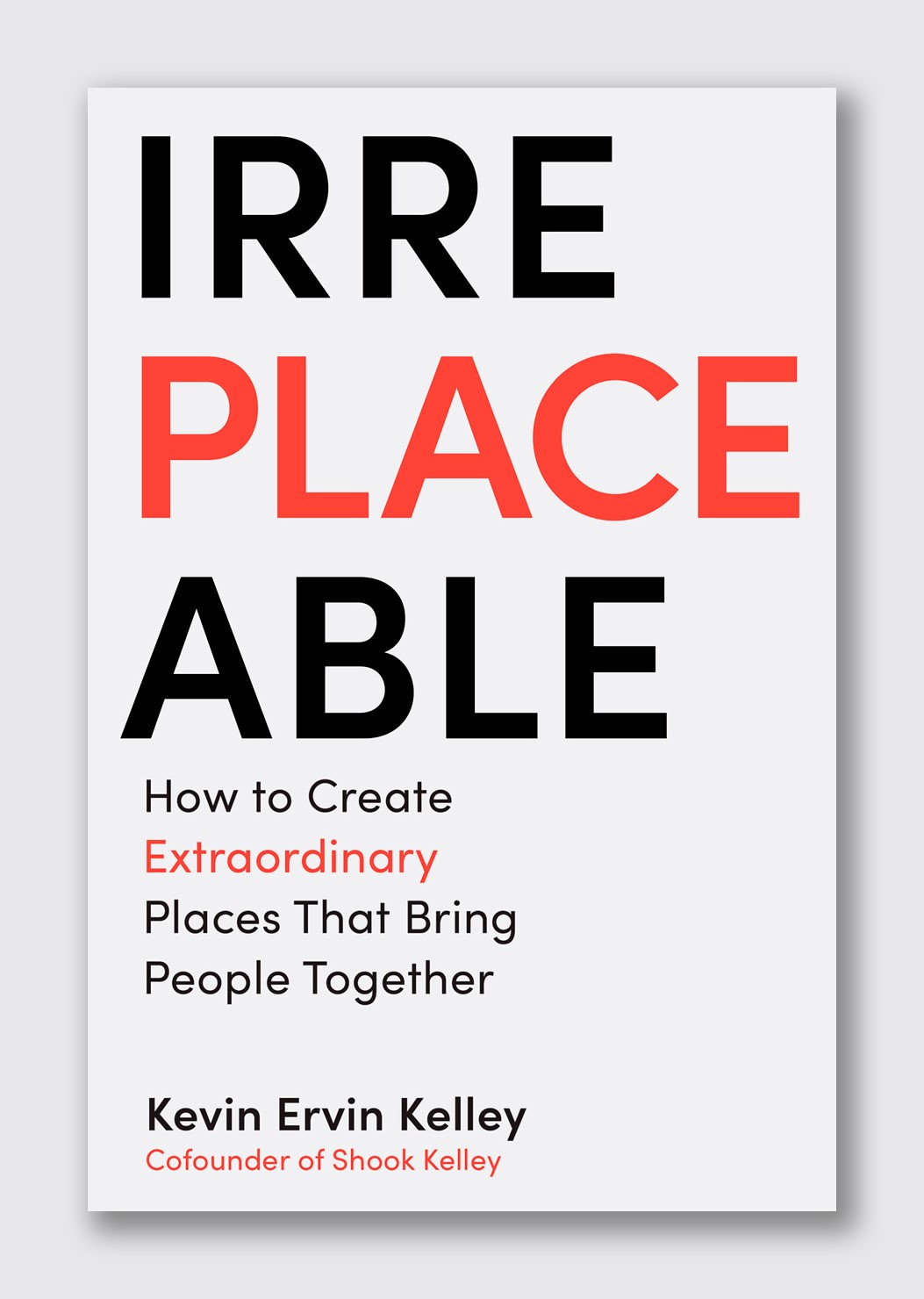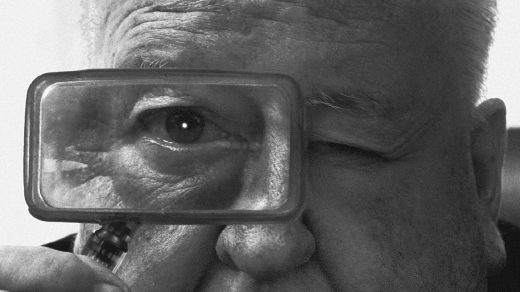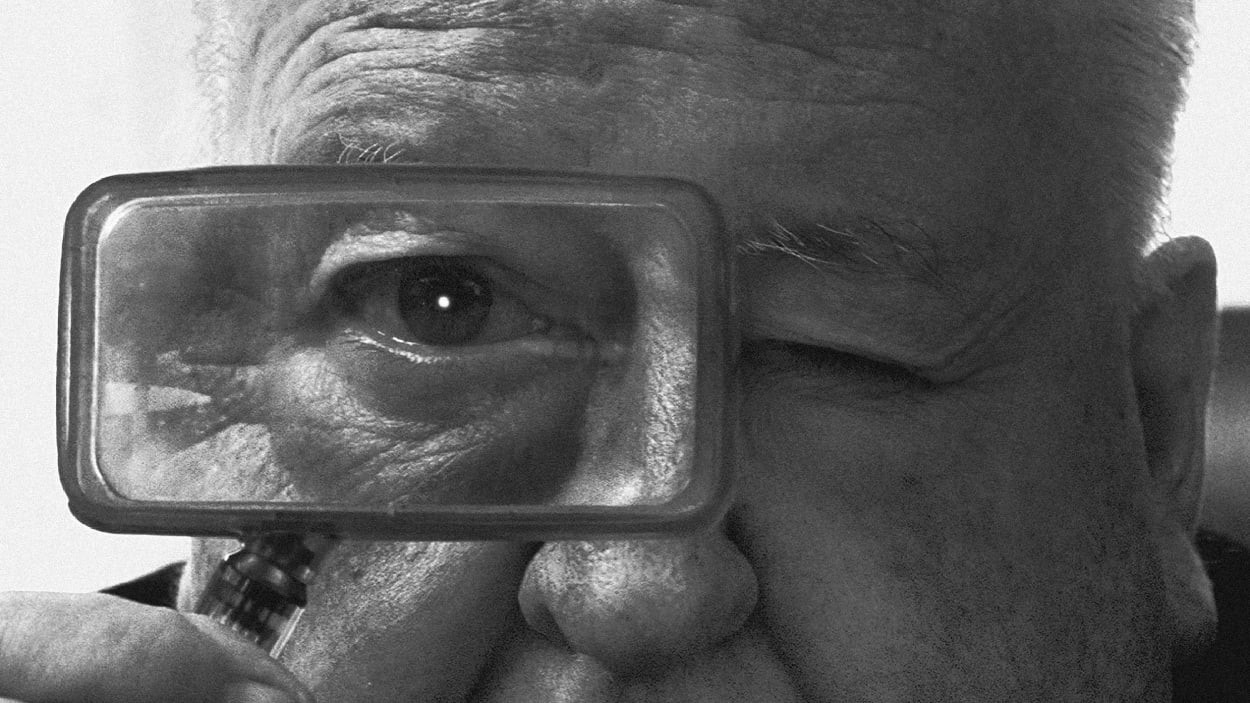What Alfred Hitchcock can teach us about designing a great retail experience
By Kevin Kelley
Many film buffs consider Alfred Hitchcock one of the greatest movie directors of all time. One of Hitchcock’s most significant contributions to filmmaking was his ability to elicit specific emotions from viewers by carefully crafting and choreographing each scene. The secret to emotions, he believed, was “in the shot,” by controlling what the viewer sees with their eyes and feels with their emotions.
Whenever I’m stuck on a design assignment, whether it’s a supermarket, restaurant, or orchestra facility, I ask myself, “How would Alfred Hitchcock design this place?” It’s unlikely Hitchcock would tolerate our industry’s preoccupation with floor plans, sections, elevations, material sample boards, or planograms. Instead, he’d break down the space into critical scenes while loading them up with psychological meaning and cultural values that pulled audiences in and made them feel a specific emotion. These feelings would not be vague, incidental, or left to chance but deliberately and intimately related to a value he wanted you to feel, first in your gut, beating heart, and sweaty palms, then in your reflective mind and emotional memory.
Instead of looking at places as facilities with departments, [at my strategy & design firm Shook Kelley] we look at them as a series of intimate scenes visitors feel with their senses and experience with their emotions. Over the last few decades of studying audience reactions to our productions, we have distilled the art and science of scene-making in places into five guiding principles.
A Good Retail Scene Has a Beginning, Middle, and End
Most retail stores don’t create scenes in their stores as much as they provide functional access to an inventory of products through aisles, shelves, or zones. Or if they have scenes, they are usually too numerous and disconnected for the customers to comprehend. Ideally, you want to organize products into a series of coherent scenes that attract the shopper and pull them into a larger journey through your store and brand. The goal of each scene is to make the customer want to know more about what is inside the frame of view.
One way to pull customers from one scene to the next is to imagine a chain of scenes representing the store’s overall experience from beginning to end. Every link in the chain is vital to customer flow, engagement, and integrity. All it takes, however, is one bad, incoherent, and disjointed scene in the chain to lose the viewer’s interest and dilute the strength of the entire story. As the acclaimed and prolific filmmaker Steven Soderbergh said, “the key to making good movies is to pay attention to the transition between scenes. And not just how you get from one scene to the next, but where you leave a scene and where you come into a new scene. Those are some of the most important decisions that you make. It can be the difference between a movie that works and a movie that doesn’t.”
Many stores we tour get the “arrival scene” wrong right off the bat. By wrong, I mean the scene is not framed in a way that immediately grabs our eye, pulls us into the store, and tells us something vitally important about the brand story we’re about to experience by shopping at this place. Instead, customers usually see half of the produce department, a quarter of the floral department, and maybe another quarter of the cereal aisle. None of these partial views of scenes are compelling, alluring, or coherent, forcing us into a rational, get-in-get-out-of-the-store mentality.
Humans tend to remember how something starts and finishes the most, which is especially true in retail, but operators and designers regularly overlook these critical scenes. People also tend to remember their best, peak experience inside a store, such as the bread-making or dessert stations at a Wegmans, and their worst experience, like waiting in long lines at the checkout zone of poorly designed stores.
A Good Retail Scene Has a Mini-climax Inside of It
Like a movie, something memorable, revealing, or dramatic should happen inside each scene of the retail store. We call this critical part of the scene the “mini-climax.”
A mini-climax for a scene, say in the Wegmans grocery store example I used previously, could be the pizza guy (actor) in his white pizza outfit and hat (costume/wardrobe) throwing the pizza dough in the air (action) while another person takes a giant wooden paddle (prop) off the old red brick wall (setting) to pull out a piping hot pizza from the wood-burning stove while shouting, “Freshly baked pizza!” (drama).
These little scene hooks and dramatic moments provide vital contextual cues about the values of the brand’s story while also capturing the customer’s attention in imaginative and memorable ways. More importantly, it gets the customer’s focus off the commodity issue of price and into the dramatic issues of quality, process, and care.
A Good Retail Scene Reinforces the Overall Plot, Quest, and Story of the Brand
On average, a successful retail store should have between five and eight major scenes that make up the whole store experience, each imparting something unique about the department they represent.
To create a cohesive and naturally flowing brand experience, each of the scenes of a retail store needs to contribute to the brand’s larger plot, quest, and moral. But underneath these scenes are the deeper core values of what the retail brand stands for and the company’s processes and editing philosophy to bring customers these product offerings. Like the protagonists in a movie, your customer should care about the processes and root for your brand to overcome the odds of fighting some villain and becoming victorious in their quest to succeed. The customer must see themselves in the story quest of where the brand is heading.
Costco does this by making the customer feel like they cut out the middleman (villain) and are bringing wholesale products and prices directly to the customer. Some of the most important props and signals Costco uses are warehouse buildings, massive metal shelving racks, plain concrete floors, and a loading dock mentality. Despite their impression, these components are not used as much for efficiency or frugality as they are key signals to the customer of their brand story and consumer value proposition of wholesale prices. As one Costco executive put it to me, “It costs us a lot of money to look this cheap!”
A Good Retail Scene Has Carefully Chosen Props, Cues, and Triggers
Whenever audiences encounter a scene in a film or a store, they subconsciously try to make sense of it in the blink of an eye. Why don’t people engage longer in a scene? Because the brain runs on a limited power source, equivalent to about a sixty-watt light bulb, and it won’t wear itself out on things that aren’t essential to our survival or can potentially enhance our lives.
For the Nabisco scene, we had to grab customers’ eyes quickly and get them in the right mood to focus on cookies and crackers. By deploying strategically placed cues and triggers—such as the cookie tins, rolling pins, kitchen tiles, picnic patterns, and cabinet drawers—we significantly increased customer engagement and sales of these products. The visual digestion of scenes has to happen quickly, as customers don’t have the time, energy, or attention span to decipher complex scenes, particularly when there are other distractions, such as people, carts, sounds, smells, and so on vying for their attention. Emotionally rich, potent, and symbolic props shorten these time frames immensely.
A Good Retail Scene Has Values and Says Something About What You and Your Customers Care About
The form of a book is different from, say, a movie. Whereas a book consists of 50,000–75,000 words on average and may take a couple of days or weeks to read, a movie based on a book must be greatly condensed into 90 to 120 minutes, allowing audiences to view them in one sitting. So how do screenwriters go about the challenging task of turning a book into a movie?
They have to identify the key scenes in the book that impart the most important values about the protagonist’s (the brand’s) quest. Then they must determine if the reader (customer) will care enough about those values and that quest to stay engrossed in the story until the closing credits.
The retail store experience is not all that different.
While the retail strategy might take all day to present to executives in a conference room, the store experience must capture and communicate a set of values and brand quest in a short amount of time. Of course, these values must be something customers can care about.
Whole Foods did this for many customers in the 1990s and early 2000s. While there were loyal customers who got Whole Foods from day one, many more non-customers didn’t understand the value of what the brand offered. These non-customers—essential to the brand’s future growth potential—didn’t know why they should pay more money for hard bread with no preservatives or hormone-free meats that didn’t have robust flavors or biodegradable detergents.
The incredibly seductive theater of retail scenes Whole Foods created in their stores, however, did an excellent job of converting people to their way of thinking by getting them to experience something they didn’t know they could care about. Many great scenes come to mind when thinking about the early days of Whole Foods, such as the way they told visual stories in the produce department about the local farmers they worked with, their produce butcher stations, and how they encouraged customers to sit down and eat, drink, and hang out in the store. But the one that sticks out to me the most is the Health and Beauty department. At the time, we were used to going to Safeway or Kroger and wading through shelves of Crest, Listerine, and Dial soap packages. But Whole Foods dropped customers into a foreign experience surrounded by unfamiliar products their parents never had in the medicine cabinet and presented them with an opportunity to ask a wise shaman (employee) who offered thousand-year-old tonics and tree bark to cure common illnesses versus NyQuil and Vicks cough drops.

Understandably, most retailers are nervous about the new world reality confronting commerce today, as they should be. But the key for retailers is not to compete on the same utilitarian dimensions or playing field that commodity players excel at. To survive and thrive in the future, brick-and-mortar retailers must reconsider what they are selling and shift the retail game to a different value equation and payoff that goes beyond price, variety, and convenience. We believe the physical stores that define the future will infuse their product offerings with other equally important features, such as meaning, entertainment, socializing, adventuring, discovery, leisure, and belonging. The value proposition will have to go beyond the literal product itself and satisfy other consumer needs, wants, desires, and quests, for which there are many.
Excerpted from Irreplaceable: How to Create Extraordinary Places That Bring People Together, published by Matt Holt Books, an imprint of BenBella Books. Copyright © 2024 by Kevin Kelley.
(15)



